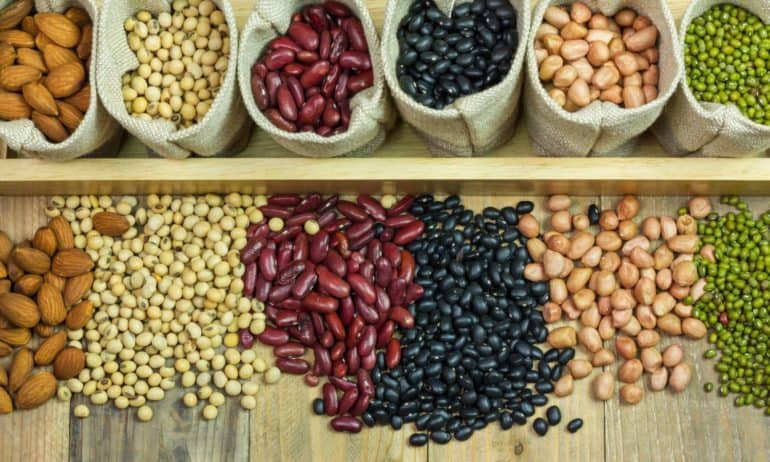A new U.N. World Food Programme (WFP) tool is highlighting the true cost of food by presenting variation in the cost of food around the world. The tool, called Counting the Beans, includes a data-driven, open-access online interface to help both experts and the general public quantify the relative cost of food in nations worldwide. The tool presents price and affordability as very different measures.
Counting the Beans compares what food really costs to members of different societies, suggesting that nominal food price is not telling enough. Dramatic variation in incomes and market values around the world makes it difficult to understand difference in cost burdens of purchasing food.
For example, imagine spending US$322.07 on a simple plate of food. Then imagine that this same plate—a 600-calorie stew made from basic ingredients—is valued at US$1.20. The difference in cost is a representation of the difference in the burden for those in different populations buying the same plate of food. These numbers, for example, compare burden for residents of South Sudan with burden for residents of New York City.
To further emphasize the difference in burden, Counting the Beans incorporates countries’ average daily incomes.
In South Sudan, the US$322.07 price tag is equal to 155 percent of average daily income. Other countries have similarly striking food cost burdens: a plate of food for 115 percent of average daily income in the Deir Ezzor region of Syria, or for 121 percent in the north east of Nigeria.
The disparity of the food cost burden is understood to be in part due to natural disaster and conflict, which can limit both food supply and food access, and which many Counting the Beans countries disproportionately face.
“Rather than focus on the product’s nominal price, we focus on the price as perceived by those meant to purchase the product,” say the tool’s developers. By calculating food expenditure as a fraction of average daily income, Counting the Beans emphasizes the difference between price and affordability.
For understanding the true cost of food, WFP calculates a theoretical price based on evidence-based ratios with average incomes. They call this their Plate of Food Index, and hope further development and data input may make it an established global index in the future.
A report detailing the project describes the first steps of developing Counting the Beans to involve creation of a standard meal and calculation of the costs of a single serving of that meal in each country. The standard meal consisted of a bean or pulse-based stew and an accompanying local carbohydrate. This meal was estimated to be 600 calories—between 25 and 30 percent of the daily calories adults require.
The developers then calculated a per-person average daily budget by country, based on each country’s GDP per capita.
Next, the developers derived the meal-to-income ratio. This ratio allows Counting the Beans to account for differences in purchasing power by country: a changing ratio between two consumers in two different countries represents affordability. The theoretical price of a plate of food is then created using this ratio in comparison with the reference location (originally, New York City).
“The results are, in many cases, staggering,” according to WFP Executive Director David Beasley. The Counting the Beans report shows that “the cost of ingredients for a simple plate of food in some countries exceeds daily income.”
To Beasley, Counting the Beans is “an opening salvo rather than a finite piece scholarship,” and one that he hopes “will trigger further reflection and spirited debate” on the true cost of food.
The tool is intended for experts in the food security and humanitarian sectors, as well as the general public. Understanding global inequities in the cost of food, and where the relative costs are most burdensome based on the meal-to-income ratio, might be helpful in guiding future humanitarian response or resilience-building techniques for food security.
Food insecurity affected 11 percent of the global population in 2016, according to the U.N. Food and Agriculture Organization’s State of Food Insecurity Report. It found that 815 million people worldwide are food insecure, a 40-million person increase from 2015, and the first increase in global food insecurity in a decade.
This tool emphasizes disparities in the cost of a basic meal, without an emphasis on the plate’s nutritional value. WFP believes the additional expense of nutritious diets should also be considered, and that a focus on supplying sufficient calories is not enough to achieve food security, says the Counting the Beans report. Adequate nutrition is important for living healthy and productive lives, and for reducing disease. According to WFP’s Fill the Nutrient Gap analysis, a nutritious diet “is considerably more expensive than one that meets only energy requirements,” even where food costs are lowest.
The Counting the Beans report includes nutrition, supply chain, and sector-specific priorities for action to reduce food cost disparities, citing that most reasons for food insecurity and price disparity relate “to the complex network of relationships that form pathways along which food travels from the people who grow, raise or catch it to those who buy, cook and eat it.” These recommendations include long-term efforts to address hunger’s root causes, to bolster the strength and resilience of food supply chains, and to emphasize initiatives in health, social protection, education, and other areas for increasing access to nutritious food.
The tool currently includes 22 reference countries, allowing it to report the cost of food in several western currencies as well as 33 developing nations. Users can interact with the tool and explore food price disparities, as well as learn more about the Plate of Food Index and ways to support WFP’s hunger alleviation programs, at its website.







